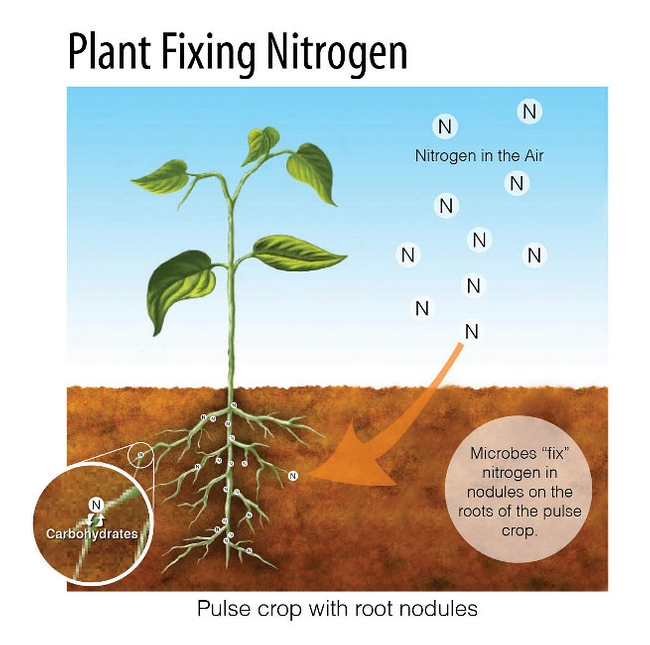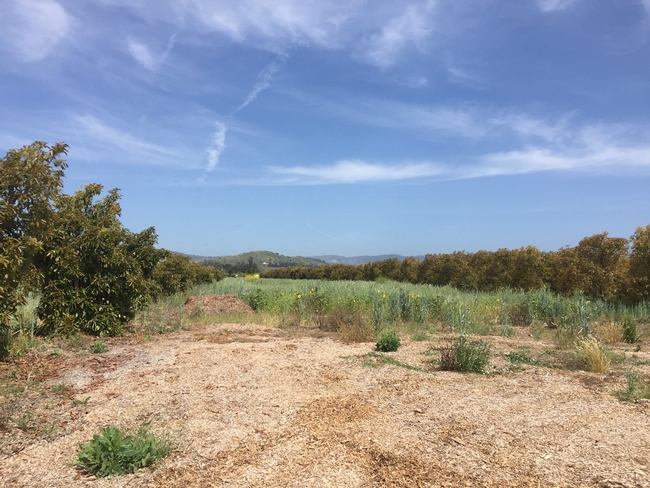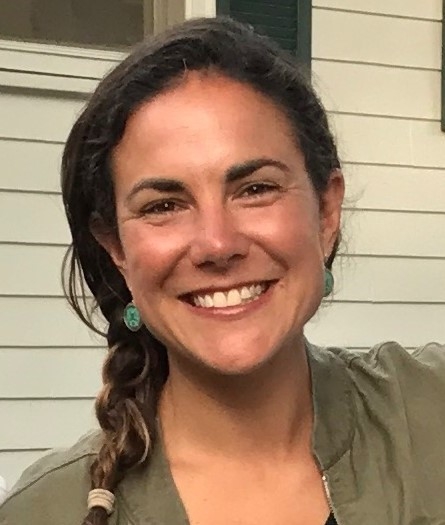Petty Ranch, a story of cover crops in Ventura County.
“All of the lemon trees were dying.” Sigh. Another distressing story about agriculture in the face of climate change, rising land values, difficult economies, and soil degradation. Or is it? Chris Sayer, owner of Petty Ranch, walks me through his 50-acre property of figs, lemons, and avocados. In addition to his trees, Chris has a whole other system growing. Cover crops.
I am personally a huge fan of cover crops or green manure. Planting cover crops keeps the soil covered, which reduces the loss of topsoil to wind and rain. Additionally, cover crops are an inexpensive way to build soil carbon and improve soil structure. Depending on the cover crop chosen, root systems help penetrate and break up plowpan layers created from tractor compaction, increase water infiltration, reduce runoff, and improve nutrient cycling for cash crops. Many cover crop systems include legumes, which have the amazing power of fixing atmospheric nitrogen. In an association with bacteria, legumes “fix” nitrogen from the atmosphere into a biologically available form in the soil that plants can use. In this way, cover crops with legumes mixed in can increase nitrogen levels in the soil, allowing farmers to reduce fertilizer inputs.

Back at the fig trees, Chris picks up a shovel. He easily scoops up a nice shovelful of soil, maneuvering the shovel into the earth with little effort. Chris explains to me that before they started cover cropping, this particular area was so compact couldn't get a shovel down even a few inches. Not even a plow could break ground below six inches. Daikon radishes and sugar beets helped improve soil structure in these heavy soils by breaking up compaction with their deep root structures. Triticale and barley add to the success by adding plentiful organic material and carbon to the soil.
Chris started cover cropping in 2005 in an attempt to build up his soil organic matter. His lemons were suffering on a heavy soil that had been compacted and degraded by years of production. When he got to the point where the trees were no longer productive, Chris decided to remove an area of lemon orchard and replace it with figs. After taking the lemons out, adding steer manure and gypsum to the soil, he planted cover crops for the first time.
Today, the entire 50-acre property has cover crops growing in between lemons, avocados, and figs. In Ventura County's climate, it makes sense to establish cover crop in the late fall when the first rains arrive, let them grow during the wet season, and terminate them when the rain disappears in the spring. On Petty Ranch, Chris lets some cover crop go to seed, saving him the money of repurchasing seed the following year. Once he terminates the cover, the plant matter decomposes and adds its organic material right back into the soil. Daikon radish, I learned while hanging out with Chris, acts like a sponge as it decomposes. Its structure holds water, improving overall soil moisture by allowing a slow release of water as the radish disappears.

The extremely cool part about Chris's cover cropping is the noticeable change in organic matter and water flow on the ranch. Before he started cover cropping, Chris's soils measured about 2.5% organic matter, which is typical for Ventura County. Since he has been cover cropping, that number has increased to 5.5%. With the increase in organic matter, Chris has seen an increase in porosity, improved infiltration, and decreased runoff.
Cover crops are one strategy to build soil organic matter, increase water infiltration, and reduce greenhouse gas emission on agricultural lands. In addition, they have been shown to improve crop yields, increase biodiversity, attract beneficial pollinators, and act as weed suppressants. You can learn more about the benefits and types of cover crops through the Sustainable Agriculture Research & Education (SARE) learning center. The California Department of Food and Agriculture's Healthy Soils Program provides funding to farmers interested in practices such as cover cropping, alleviating some of the initial costs associated with starting the practice. For more information about cover crops or the Healthy Soils Program, please reach out to me or your closest UC Cooperative Extension community education specialist:
Mendocino County: Britta Baskerville – blbaskerville@ucanr.edu
Glenn County: Dana Brady – dmbrady@ucanr.edu
Yolo County: Emily Lovell – ejlovell@ucanr.edu
Santa Cruz County: Valerie Perez – valperez@ucanr.edu
Ventura County: Alli Rowe – amrowe@ucanr.edu
San Diego County: Esther Mosase – enmosase@ucanr.edu
Imperial County: Kristian Salgado – kmsalgado@ucanr.edu
Kern County: Shulamit Shroder – sashroder@ucanr.edu
Climate smart agriculture encompasses management practices that increase soil carbon sequestration, reduce greenhouse gas emissions, improve yields and efficiencies, and promotes climate resilience. The California Department of Food and Agriculture (CDFA) supports three funding opportunities in climate smart agriculture: the Healthy Soils Program, the State Water Efficiency & Enhancement Program, and the Alternative Manure Management Program.
In a collaborative partnership, CDFA and UC Agriculture and Natural Resources have teamed up to support 10 community education specialists throughout the state to provide technical assistance and outreach for the climate smart agriculture programs. As one of these technical assistance providers, my role is to promote and support the adoption of these programs in Ventura County. If you are interested in working with me, please contact me at amrowe@ucanr.edu
